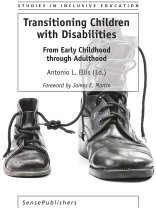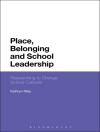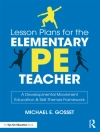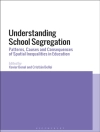This book is an authoritative volume of scholarship through qualitative and quantitative methodologies on postsecondary transition services for a diverse readership. The editor’s intended audience is composed of students with disabilities, school administrators, special education coordinators, colleges and university faculty, staff, and administrators, among other scholars, practitioners, and advocates. Readers of this volume will be educated on the postsecondary transition process, and the lifelong commitment of educators who guides students with disabilities through their rigorous, yet rewarding journey. This book also can be used by student personnel administrators, employers, student retention coordinators, and workforce development professionals to improve the implementation of postsecondary transition services. The importance of comprehensive transition planning for students with disabilities is the impetus for bringing this collaborative effort to print. Topics in this volumehighlight areas that have critical implications for children and adolescents’ preparation for adulthood. Contributors’ presents potent research regarding various topics addressing P-16 students’ needs, and have been active practitioners in both areas – transition services and disabilities as defined under the Individuals with Disabilities Education Act (IDEA) of 2004. Ultimately, this book is a collection of interrelated chapters that offer rich content and insights into current trends for individuals with disabilities who are moving through various stages of their lives.
Jadual kandungan
Foreword; Acknowledgements; The Introduction; It Takes Two: Principals and Special Education Educators Creating Transitional Spheres; Transitioning to a New Regime or More of the Same? Examining the Efficacy of the Tennessee Diploma Project to Increase Data Reporting on Special Education Graduation Rates in Charter Schools; Personnel Preparation in Transition Education: A High Need for Historically Black Colleges and Universities; Beyond Compliance: Supporting the Transition of English Language Learners with Special Needs; The State of Federal and State Accountability Systems That Support P-12 and Postsecondary Transition Services for English Learners with Disabilities: Do They Exist and What Is the Need?; The Role of Technology on Preparing Students with Language-Based Learning Differences for Transition to Public High Schools; The Role of Literacy on the Postsecondary Opportunities of Students with High Incidence Disabilities; Transitioning to Kindergarten: Improving Outcomes for Preschool Children with Behavioral Challenges; Rethinking the Paradigm: Comprehensive Transition from Birth to Adulthood; Increasing Cultural Responsiveness: Improving Transition Outcomes for Culturally and Linguistically Diverse Students; Using the Taxonomy for Transition Programming 2.0 to Guide Transition Education; Transitioning from High School to College: A Dance for Students with Learning Disabilities; Reaching Higher: College and Career Readiness for African American Males with Learning Disabilities; One in the Same; About the Contributors.












